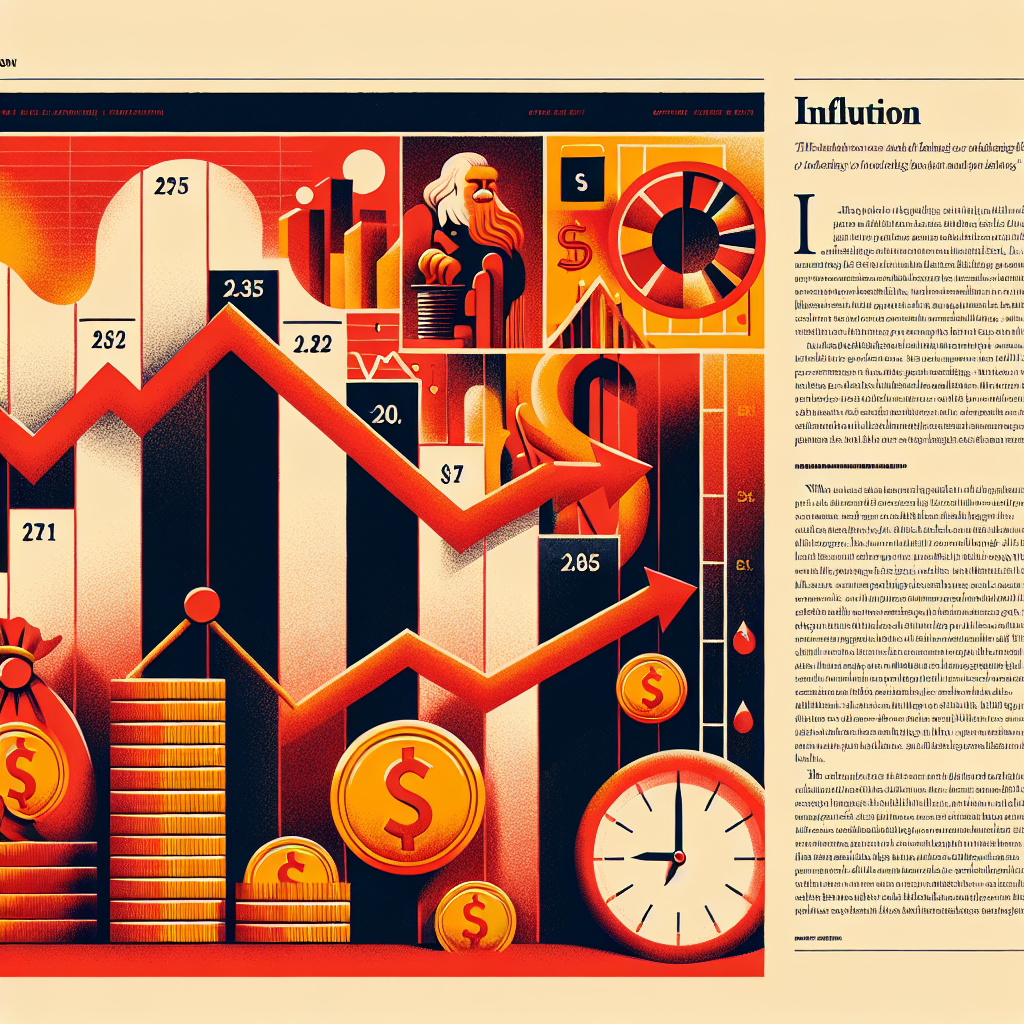US Inflation in 2025: Trends, Impacts, and What It Means for You
Understanding Inflation Trends as of March 2025
As we move further into 2025, inflation in the United States has shown signs of both decline and resilience. The Consumer Price Index (CPI) decreased to 2.4% in March, down from 2.8% in February, marking a pivotal moment in the inflation trend as we observe the first decrease since May 2020. However, this figure remains higher than the Federal Reserve’s long-term target of 2%. Additionally, the Core CPI, which excludes food and energy prices, dropped to 2.8%. This reflects a stabilization in core consumer prices—indicating underlying strength in consumer demand.
Graphical representation of CPI trends over the past few years.
Throughout 2025, these trends underline the balance that the Federal Reserve must strike in its monetary policy decisions. While the overall decrease in inflation is encouraging, policymakers remain vigilant as inflation rates above their target could necessitate further corrective measures. Investors and consumers alike should keep an eye on the evolving economic landscape.
The Influence of Tariffs and Trade Policies
The landscape of inflation is being influenced significantly by trade policies, notably those stemming from the previous administration. President Trump’s administration introduced tariffs that could push inflation towards 4% by the end of 2025. This forecast is predominantly shaped by ongoing tensions in international trade, particularly with China.
Analysts from Capital Economics project that basic goods prices will rise, contributing to the expectation of a core inflation rate edging toward 2.7%. As tariffs increase the costs of imported goods, domestic prices are likely to follow suit, impacting both businesses and consumers. Understanding these dynamics is essential for both consumers and investors as they navigate their financial futures in this evolving economic climate.
Sector-Specific Insights
The effects of inflation are being felt unevenly across different sectors. Here’s a quick overview of how inflation is impacting various industries:
-
Food Prices: Grocery inflation has risen to 3%, severely affecting staples such as eggs and instant coffee due to ongoing supply chain disruptions. As consumers adjust their budgets, brands may need to modify their pricing strategies to maintain competitiveness.
-
Energy Costs: Gas prices have recently seen volatility, dropping by 6.3% in March. However, market observers anticipate an upward trend in energy prices as global economic conditions stabilize. Any changes in energy costs will likely ripple through transportation, manufacturing, and even household expenditure.
Infographic summarizing sector-specific inflation rates and predictions.
Seeing these fluctuations helps consumers to adjust their spending habits as they anticipate further changes in market pricing. Businesses should also strategize accordingly to ensure they can adapt to these market dynamics promptly.
Broader Economic Implications
A sustained rise in inflation may prompt the Federal Reserve to reassess its interest rate policies, potentially delaying rate cuts that could affect borrowing costs. Businesses anticipate an increase in operating costs due to tariffs, predicting inflation rates to hover between 3% and 4% in the upcoming year.
The anticipated economic environment could mean that consumers face higher costs of loans, credit cards, and mortgages which would impact their discretionary spending. It’s important for individuals to consider their financial planning and budgeting in light of these predictions, to mitigate the effects of rising living costs.
Public Sentiment and Market Responses
As inflation concerns grow, 77% of Americans express worries that their incomes are not keeping pace with price increases. This consumer sentiment can significantly influence behaviors, impacting sectors that rely on discretionary spending. Retailers, for example, may find themselves needing to adjust their offerings in response to changing consumer demands.
Investors are keenly monitoring key economic indicators, especially the CPI readings anticipated on May 13, 2025, for signs that could influence market strategies. Keeping a pulse on these developments is crucial for making informed investment decisions as we move forward.
Conclusion
The inflation landscape in the US for 2025 is fraught with uncertainties driven by geopolitical tensions and domestic economic policies. Investors must adapt their strategies to navigate this dynamic environment effectively. Understanding the interplay of inflation rates, consumer sentiment, and sector performance will be essential for forecasting financial health in the coming months.
